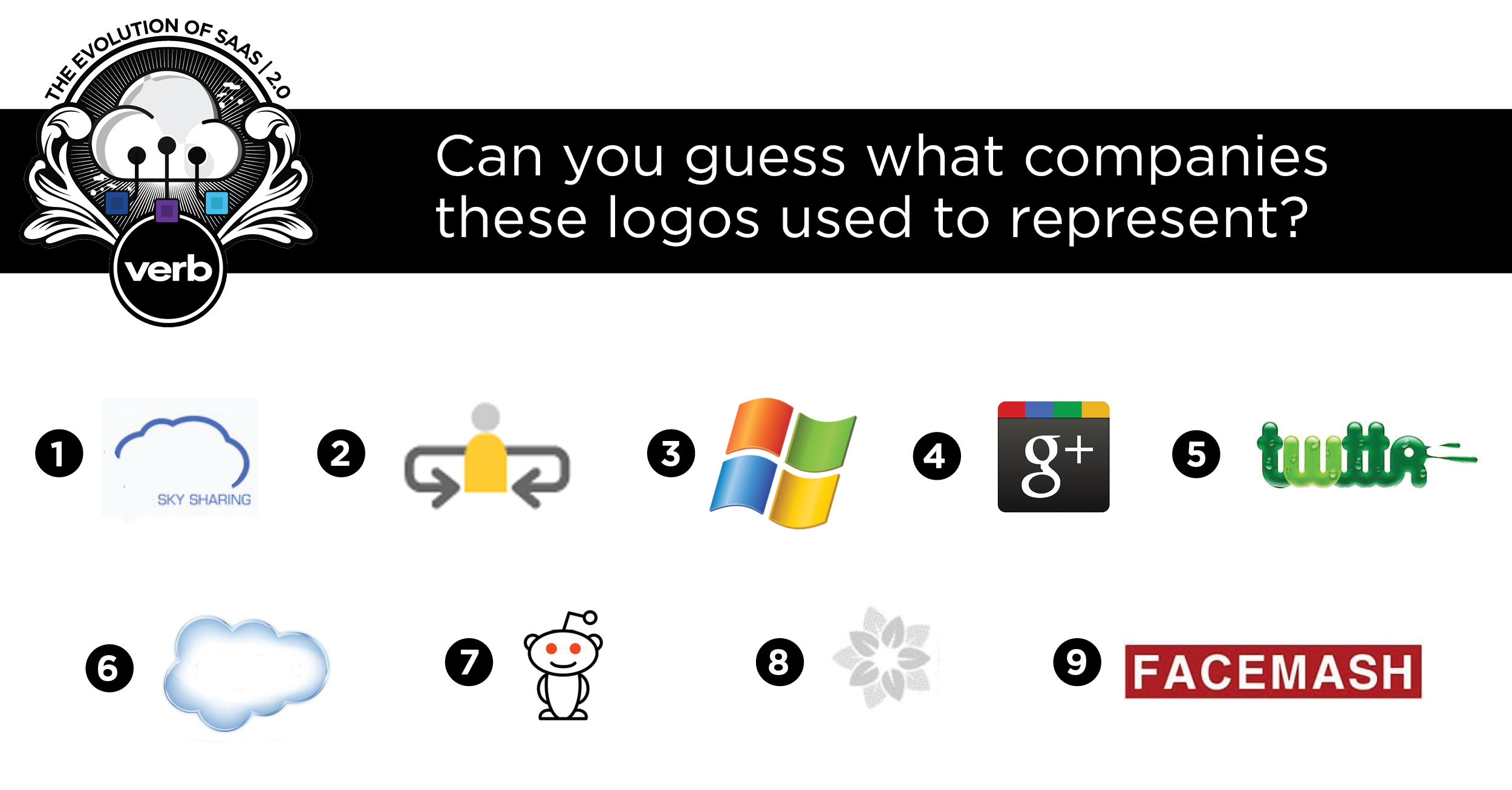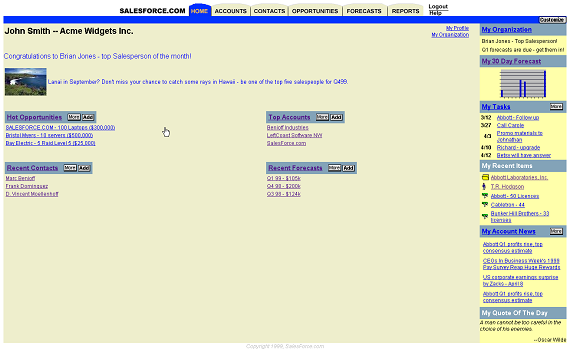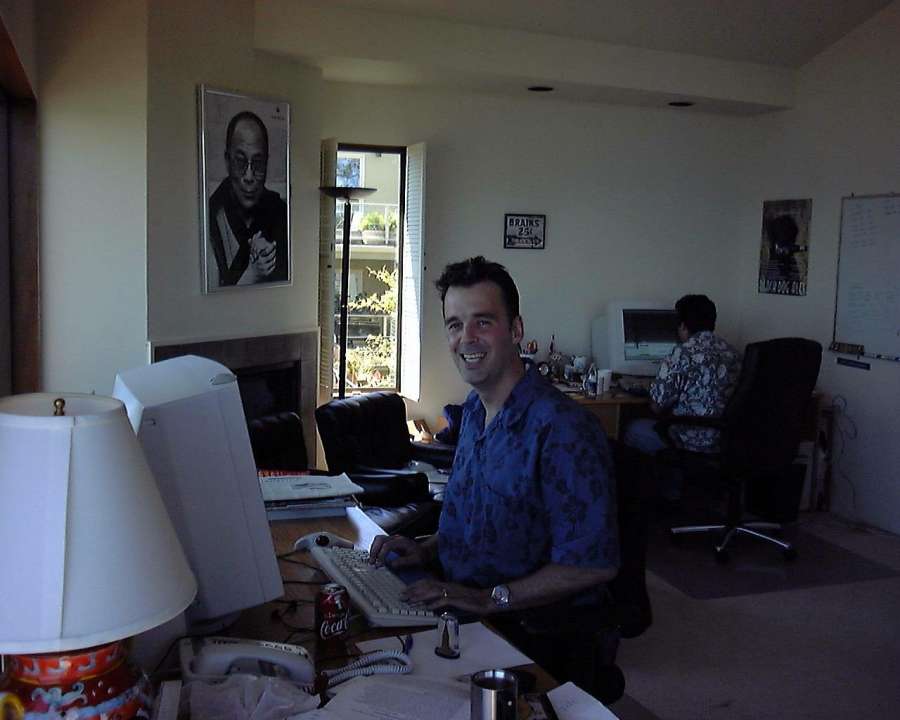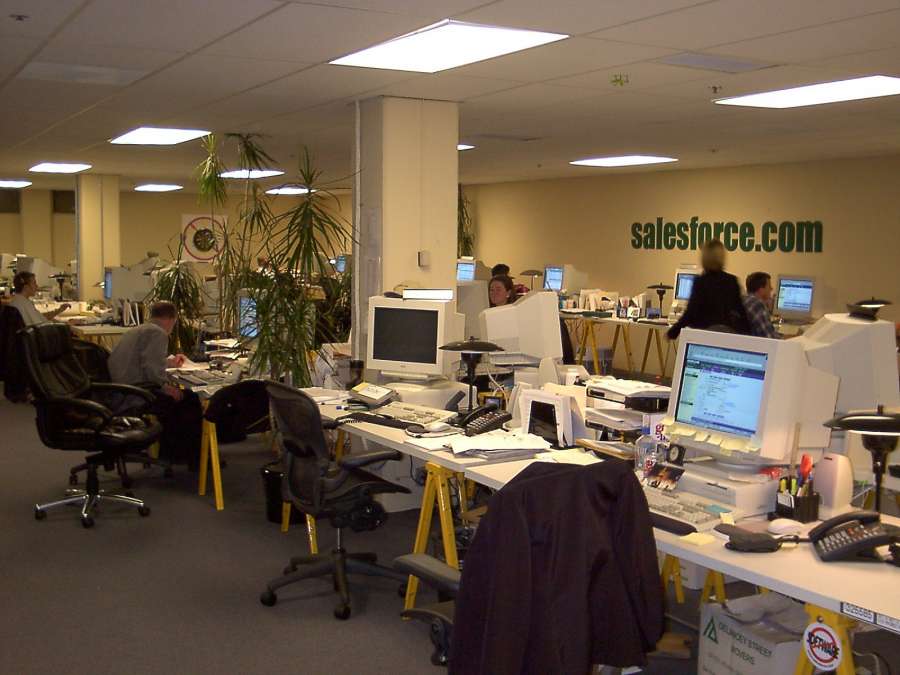After a successful journey into the 90s, we've pushed our time machine forward a little bit and arrived safely in the 2000s. It's great to be here.

If the above statement doesn't make any sense to you, you might not have heard about our Verb Themes initiative. If you have a minute to check it out, I highly recommend diving in!
This leap into the past allows us to look back on our roots, see where we came from, and maybe even help us prepare for the future. So in that spirit, I wanted to take a look at the birth of CRM. How it started, grew, evolved, and eventually led to Verb as we know it today. The tech industry and the internet, in general, have changed so much and so quickly over the years that it's easy to forget how exactly we got to where we are now. And I’m going to crack open the archives of the internet to find some answers. So let's get to it, shall we?
 This will make sense as we go on, but the original version of the website is meant to model to look like Amazon's site at the time, with tabs across the top.
This will make sense as we go on, but the original version of the website is meant to model to look like Amazon's site at the time, with tabs across the top.
WHAT IS CRM?
I went a lot longer than I probably should have without knowing what CRM stood for. Or what CRM companies did. Or where they came from. So just in case you're anything like me, let's start from the beginning.
CRM stands for Customer Relationship Management, and essentially it’s a type of software that provides the means for a company to organize and analyze every piece of their customer base. It can touch everything from sales to marketing to customer service and beyond.
So imagine a piece of software that tracks all of your company's customers as soon as they become your customer. It stores their contact information, what they buy, their interactions with customer service, and makes all that information available to every department in the company. Using that data, your marketing team can suddenly generate a list of people who would absolutely love to try your latest product, based on their past purchases.
At first glance, it seems like a useful tool, but maybe too simple of an idea to be considered a big deal within the tech industry. But rest assured, there's a reason it's a multi-billion dollar a year market that continues to grow year after year.
WHEN DID THIS BECOME A THING?
If you want to get technical (and I do), CRM started with such innovative technologies as the Rolodex or the filing cabinet. Decades ago, it was just how a company kept track of stuff like that. These were the first customer databases, and they were terrible. Computers were a much more efficient way of sorting through all that data, and one of the first companies to put that into practice was ACT!, which released the first contact management software in 1987.
A few years after that, a company called Brock Control Systems came along to merge the idea of contact management and database marketing to create Sales Force Automation (SFA). Using this software, companies could not only keep track of their customers but their inventory and sales as well. The first signs of CRM as we know it today started to become apparent.
It's funny, but in my research, I couldn't seem to find a solid answer for when the acronym CRM was first officially used. There are quite a few conflicting stories out there, and most people who have spoken on the subject just call the software CRM every step of the way, even though the term wasn’t coined until the mid-nineties. It's fascinating to me that even in the modern era where everything is being recorded and documented, sometimes there's just so much information out there that the truth still manages to elude us.
Something nearly everyone agrees on is that the next major innovation in CRM was created by Tom Siebel after he left Oracle to start Siebel Systems. In the late nineties, his new company debuted Siebel 99 (also called Siebel Handheld or Siebel Sales Handheld depending on where you look), which was unique to CRM in that -- get ready for this -- it ran on mobile devices.
So in 1999, we had access to a mobile CRM platform that featured a sales coaching tool, presentation generators, expense reporting, and tools for analytics. I was honestly floored to learn that, but it's true. Several companies, including Oracle, jumped on the mobile train back then and tried to make it work, but ultimately it was kind of considered a failure. Why?
Adoption rates.
There just weren't that many handheld devices back then, and the ones that existed were extremely limited in their functionality. Siebel 99 was ahead of its time, and it's interesting how often that's not a compliment within the tech industry. It would take at least another decade before businesses would start to realize the power of mobile devices, and there were a few more innovations that needed to happen first.
This brings us up to the final year of the 1990s, when cloud-based services for CRM appeared on the scene. I could write an entire additional blog post on the evolution of the cloud, but I was surprised to find out it started way back then. It was a cheaper alternative to hosting everything on-site, but would take some time to become popular as well.
 Though Salesforce.com was incorporated the month before, its founders consider March 8, 1999, its start date.
Though Salesforce.com was incorporated the month before, its founders consider March 8, 1999, its start date.
Enter Salesforce, the business platform that introduced the world to Software-as-a-Service (SaaS) in 1999. Technically it wasn’t the first company to offer software as a service, but it was the first to fully commit to being digital. There was no physical product, you just downloaded the app over the internet. It gave Salesforce a strong foothold within the CRM market and could be one of the reasons it’s still around today.
 By June, the apartment was too cramped. Benioff leased an office at Rincon Center. Harris worried it was too much space. They would soon fill it up with employees.
By June, the apartment was too cramped. Benioff leased an office at Rincon Center. Harris worried it was too much space. They would soon fill it up with employees.
Unfortunately, we have to end our story today with a Star Wars style, Empire Strikes Back bummer of an ending. Because something happened in the early 2000s that shook the foundations of the online world and caused some of the biggest names in CRM at the time to report major losses in revenue. In particular, Oracle reported losses of more than 25%, and Siebel Systems reported their first quarterly loss ever.
All this growth and innovation took a punch in the gut during that time, and it would take a few years for companies to turn things around, and for the technology to start advancing again. But once it did...well, you remember what I said about CRM being a multi-billion dollar industry, right?
THE NEXT EVOLUTION
In short, that covers the history of CRM from its beginnings until the early 2000s. I love looking at this massive tower that is CRM and examining each brick individually to get a better picture of how its foundation was built. And we're only getting started. In the next part of this series, we'll see even more innovations, like the move to mobile that actually worked this time, and the use of cloud-based CRM as an enterprise solution instead of just something small businesses could use. We'll also talk about the arrival of some of the biggest players in CRM today: Microsoft, Amazon, Zendesk, Twitter, Facebook, HubSpot, and of course, Verb.
I hope you enjoyed this brief look back at CRM, and hope you'll join us as we unpack the rest of this massive history. At Verb, we're always moving forward. But sometimes to do that, you've got to discover where you came from first.
About the Author:
Spencer Sandoval is a nerd culture enthusiast who enjoys gaming, podcasting, and all things tech. Writing has been his hobby for decades now, and he doesn't plan on stopping anytime soon.
